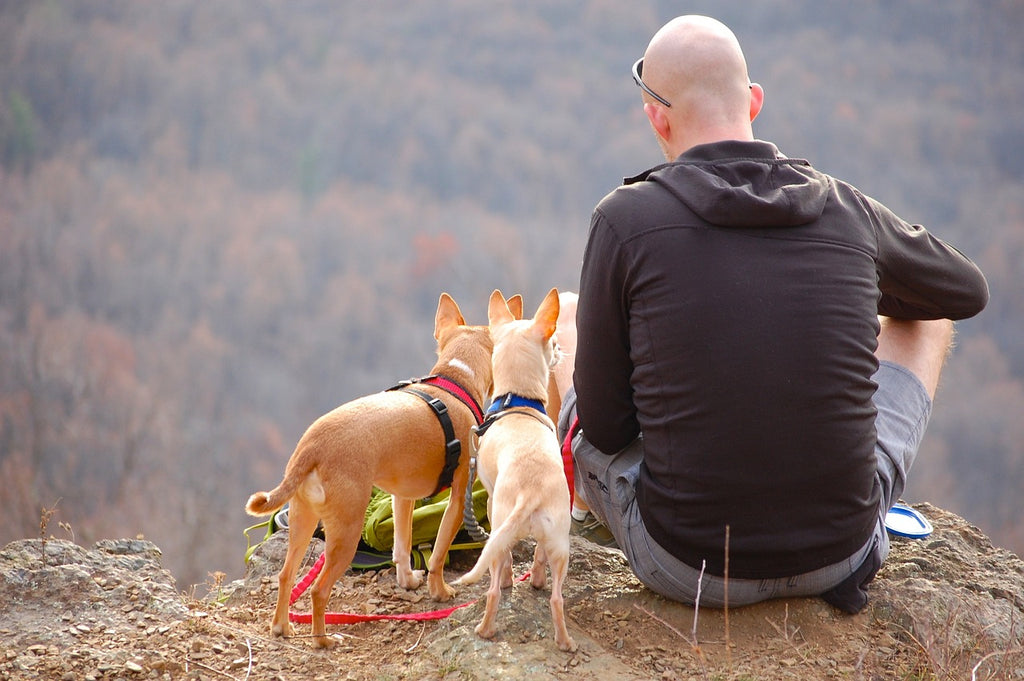Hiking with Your Dog: Essential Tips for a Memorable Adventure
Hiking and camping with your canine companion can be an incredibly rewarding experience, allowing you to strengthen the bond between you and your furry friend while immersing yourselves in nature. However, before hitting the trails, it's important to be prepared and prioritize your dog's safety and well-being. And you can follow these essential tips to ensure a successful and enjoyable adventure:
1. Assess Your Dog's Fitness Level
Before embarking on a hiking adventure, evaluate your dog's fitness level. Consider their breed, age, size, and overall health. Some dogs are better suited for long hikes with challenging terrain, while others may require shorter, easier trails. Consult with your veterinarian to ensure your dog is physically capable of handling the demands of hiking.
2. Basic Training and Recall Commands
Ensure your dog has basic training and responds reliably to commands such as "sit," "stay," and most importantly, "come." A well-trained dog is easier to handle and can be kept safe in potentially hazardous situations. Practice recall commands in various environments to reinforce their responsiveness and keep them under control during the hike.

3. Leash and Harness
Keep your dog on a leash at all times during the hike. This not only ensures their safety but also respects other hikers and wildlife in the area. Use a sturdy leash and consider a harness instead of a collar, as it provides better control and reduces strain on the neck. Familiarize your dog with the leash and harness before the hike to prevent any discomfort or resistance.
4. Pack Essential Supplies
Be prepared by packing the necessary supplies for your dog's well-being:
- Water and portable bowl: Carry enough fresh water for both you and your dog. Hydration is vital, especially during strenuous hikes.
- Food and treats: Pack sufficient food and treats to keep your dog energized throughout the hike. Consider lightweight and compact options.
- Waste bags: Always clean up after your dog. Bring waste bags to properly dispose of their waste and help maintain the cleanliness of the trail.
- First aid kit: Include items like bandages, antiseptic wipes, tweezers (for tick removal), and any necessary medications for emergencies or minor injuries.
- Identification: Ensure your dog wears a collar with identification tags displaying your contact information. Microchipping is also recommended for added security.
5. Be Mindful of the Trail and Environment
Respect the rules and regulations of the trail and be considerate of other hikers, wildlife, and the environment:
- Research the trail: Familiarize yourself with the trail's difficulty level, length, and potential hazards to ensure it's suitable for your dog.
- Check leash regulations: Some trails may require specific leash lengths or have designated off-leash areas. Adhere to these rules to maintain a safe and harmonious environment.
- Wildlife encounters: Be cautious when encountering wildlife. Keep your dog on a short leash to avoid disturbances or potentially dangerous situations.
- Protect paws: Check the trail conditions and temperature. In hot weather, protect your dog's paws from hot surfaces, and in cold weather, consider using booties to prevent ice or snow buildup.
- Leave no trace: Respect nature by packing out all waste, including dog waste. Minimize your impact by sticking to designated trails and avoiding sensitive habitats.

6. Consider Your Dog's Comfort
Ensure your dog is comfortable throughout the hike:
- Rest breaks: Take frequent breaks to allow your dog to rest and recover. This is particularly important on longer hikes or in hot weather.
- Shade and shelter: Provide shade or a cooling spot during breaks to protect your dog from the sun and heat.
- Bedding or mat: If camping overnight, bring a comfortable bed or mat for your dog to rest on at the campsite.
7. Observe Your Dog's Well-being
Monitor your dog's behavior and well-being throughout the hike:
- Signs of fatigue or distress: Watch for signs of exhaustion, overheating, limping, or any unusual behavior. Take breaks or adjust the hike accordingly if needed.
- Water intake: Encourage your dog to drink water during breaks to stay hydrated.
- Tick and flea prevention: Use appropriate preventative measures to protect your dog from ticks, fleas, and other parasites.
Hiking with your dog can be a wonderful adventure filled with exploration and bonding. By assessing your dog's fitness level, ensuring basic training and recall commands, using a leash and harness, packing essential supplies, being mindful of the trail and environment, prioritizing your dog's comfort, and observing their well-being, you can have a safe and memorable hiking experience with your canine companion. Enjoy the great outdoors together while creating lasting memories along the way.